What we’ll cover…
- Optimal radiator placement: The best locations for radiator installation to maximise heating efficiency.
- Relocating radiators: Tips and considerations for the safe movement of radiators.
- Calculating power requirements: How to use BTU calculations to work out the appropriate radiator size for a room.
- Material comparisons: An overview of different radiator materials (steel, aluminum, cast iron) and the advantages they provide.
- Finishes and valve selection: Options for radiator finishes and the importance of selecting compatible valves.
- Maintenance and troubleshooting: Signs that indicate maintenance requirements, including leak detection and bleeding.
Frequently asked ‘radiator’ questions
As the UK’s leading supplier of designer radiators and towel rails, we get a lot of questions about radiators every single day and our team of heating experts are always happy to help you make the best heating choices (see what I did there?) whenever you drop us a line or send us an email.
So, because I am a helpful sort of a soul and love to offer advice and know-how on all things home heating, I put together this list that should come in handy if you’re ever making plans to install, update and upgrade your radiators.
These are the most common questions about radiators…
Where is the best place to hang my radiator?
Though probably one of the most contentious radiator questions – with mixed feelings about what the correct answer really is – there isn’t really a right or a wrong place to hang a radiator.
Obviously, on the ceiling or three-quarters of the way up a wall are probably not ideal places, but common sense should prevail.
The main argument is for a radiator to be placed near to an area of heat loss – like under a window for example – so any cold air that enters the room can be met by the warm air from the radiator and circulated throughout the space.
However, there is a school of thought that suggests installing radiators away from colder areas of a room is more cost effective.
So, it’s understandable if there is a little confusion.
There is a simple answer to this problem though: select a position for your new radiator based on the layout of your room.
There are no real rules to the position of a radiator and it doesn’t have to stay where is right now. In truth, moving it may mean that you can use your available space more efficiently and create a feeling of more space.
This is easily achieved with more modern tall vertical radiators and can be further enhanced with middle connection radiators too – as this style makes a slimline radiator even thinner, thanks to the valves being on the bottom of the radiator instead of the sides.
To learn more about the optimal position for your radiator to go, head over to our ultimate guide.
How does moving my radiator affect my interior?
It’s important to remember that is you’re working with a plumbed radiator – that’s one that’s connected to your mains central heating system – then that will require draining BEFORE you can remove it from the wall.
This must be done to avoid any spillages and water damage, and, thankfully, we have tips on how to do it safely and without any mess in this cold radiators guide.
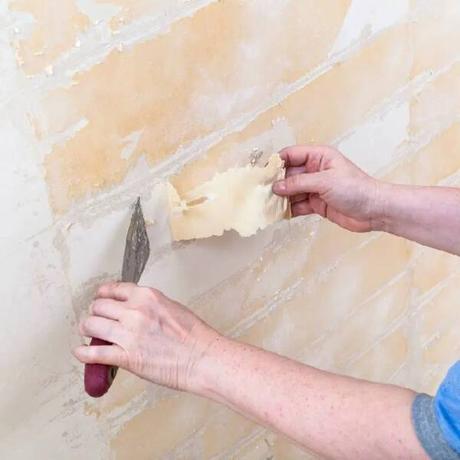
If the radiator you are moving is on a papered wall, there is a high probability that once the appliance has been removed you’ll be left with a couple of unsightly holes where the fittings were.
If you are moving the rad to another papered wall, try and position it on a central strip of paper – rather than across two or more pieces – as this will mean that you only need to replace a single section, rather than going to town and repapering the entire space.
Top tip – When wallpapering, always keep a spare roll or two of your chosen design. These may come in handy if you ever feel the need to remove a radiator again, or if one or more of the pieces become damaged in any way.
Flooring is also very important to keep in mind when it comes to moving a radiator to a new location.
If it is a central heating radiator you will have to lift your floorboards to gain access to the pipework before you relocate the radiator, and this can sometimes prove tricky.
Thankfully, we also have a guide to positioning a radiator to help you out.
Remember, BEFORE you go tearing your radiator off the wall, if it has a thermostatic radiator valve (TRV) attached to it, be sure to turn this down to zero before disconnecting the radiator tails and removing the radiator from the wall.
Failing to do this could potentially result in the temperature dropping and lead to the valve opening, resulting in a flood that spoils any carpet, flooring and furnishings in the area; as you probably already know, radiator water isn’t clean and fresh!
Does the condition of the wall matter?
Any wall that you want to hang a radiator on needs to be able to carry the weight of the appliance.
The heavier the radiator – cast-iron-style for example – the stronger and more structurally sound the wall will need to be.

A wall like the one above will need to be dramatically reinforced before a heavy radiator was installed on it – but common sense again should prevail, nobody in their right mind would fit a radiator to this wall before it was made to look considerably better than it currently does.
In fact, you shouldn’t hang a radiator on any wall that requires plastering BEFORE it has been plastered.
Doing so may cause even further damage and disintegration to the wall and will certainly lead to loose fixtures and fittings that will damage your new radiator – and as anyone that reads our blog regularly will tell you, damaging radiators just isn’t on and you’ll have to see me after school if you so much as think about damaging your new radiator.
It’s just not heating cricket!
Can I hang my radiator on stud wall?
If you’ve been lucky enough to add an ensuite or perhaps an extra bedroom – or perhaps created an extension for your home, you may have opted for stud walls to get the job done.
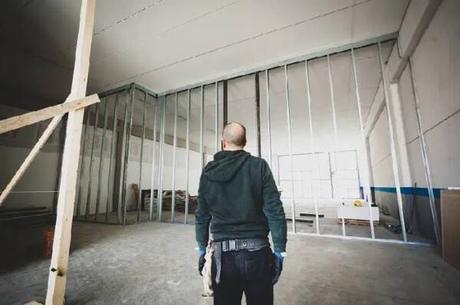
Stud walls are made from plasterboard and supported by a horizontal and vertical timber or metallic frame called (appropriately) ‘studs’.
When it comes to hanging your radiator or towel rail on a stud wall, you most definitely want to be sure you are attaching it to the wooden frame and NOT the plasterboard – not doing so is a disaster waiting to happen.
If you are hanging it from a stud wall, you’ll need to find the studs first and this is pretty simple to do.
Simply tap along the surface of the wall until you hear a solid sound. It won’t be too difficult to discern the hollow sound and the solid sound, and once you hear it you know you’ve found a stud.
But don’t worry, if you aren’t confident about your listening skills, you can always go to a local DIY store and purchase a stud finder – or even download an app to your phone to do the same job.
If you’re not sure about the strength of your internal walls, it’s probably best to consult a heating specialist before you plow ahead and start making changes and keep a look out for the ‘product weight’ in the ‘additional information’ tabs on all of our radiator product pages, as this is important information to have to hand if you are discussing potential radiator placements with your plumber.
How powerful does my radiator need to be?
This is probably the most frequently asked question of all the frequently asked questions that we frequently get asked.
Thankfully, there is a simple way to work out how powerful your radiator needs to be – use our BTU Calculator.
Every room of your home requires a different temperature to ensure a nice cosy feel, so simply entering a few details about the space – like dimensions, types of glazing, etc – will give you a BTU figure that you can rely on to help you select the best radiator you can.
It may be that you have such a large space that you require two radiators or a really powerful single radiator, but inputting a few details into a BTU Calculator like ours will ensure you know how powerful your appliance needs to be.
Learn more about BTUs in our epic blog guide!
What material should my radiator be made from?
The type of material you opt for really depends on your individual heating requirements, your budget and how you would like to style your space.
There is glass, stone, aluminium, cast iron and many more to choose from, but the top pick for me would have to be mild steel.
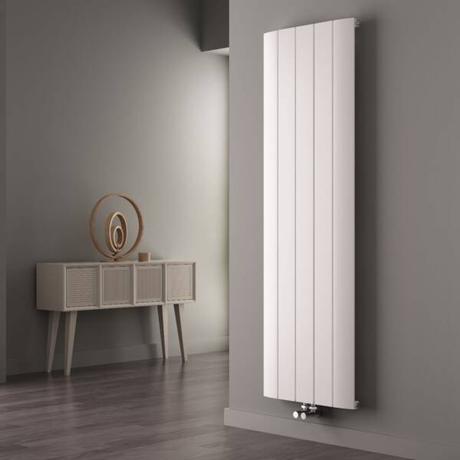
Not only is steel suitable for every type of central heating system, but as a conductor of heat it delivers a great output, so is extremely efficient when compared to other materials.
But you don’t have to opt for steel just because I said to – if you are more of an environmentalist, then aluminum is a great heating choice for your radiators and towel rails.
Not only is it the most abundant metal on earth, but it’s also quick to heat up, doesn’t corrode over time as steel does and it’s the lightest material available for radiator construction, which makes it ideal for internal stud walls.
Aluminium is also readily recycled, so is better for the planet all round than steel radiator designs.
If you have a bigger budget to play with – and vintage styling is at the top of your wishlist – then perhaps opting for cast-iron radiators is where you should be looking.
They hold on to their heat longer than any other material and add an impressive look to any space, but don’t worry if you haven’t got the budget for an expensive cast iron look – you can replicate the style with a steel alternative like one from the Milano Windsor range.
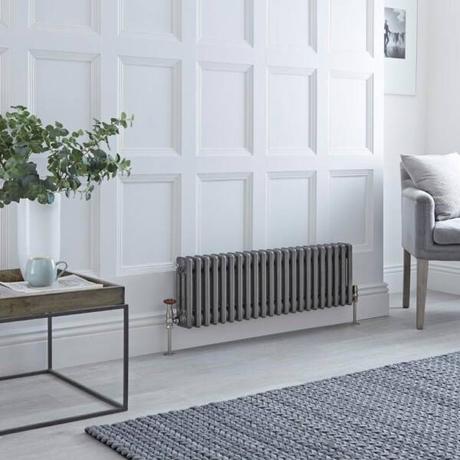
What kind of finish should my radiator have?
Well, one thing is for certain…in the world of modern home heating, you’re pretty much spoilt for choice when it comes to selecting a finish for your new radiator and you don’t just have to go for a white one!
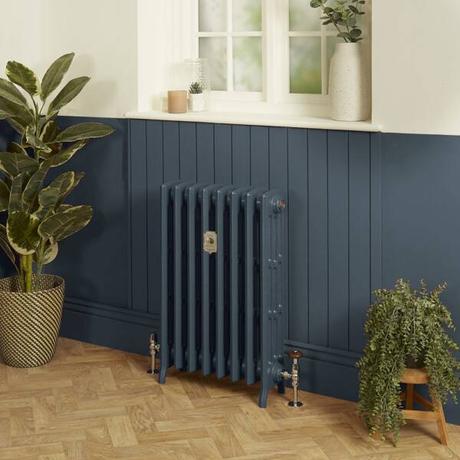
From black, gray and anthracite to blue, orange and even duck green, there are lots of different styles and finishes that can help you to complement the look and feel of a space – just take a look at our coloured designer radiators to learn more!
You can even get textured finishes to some radiators and towel rails and be really decadent with your choices if that’s your bag.
But regardless of its power, heat output and overall design, when it comes to selecting a finish for your radiator or heated towel rail, the main consideration should be how that finish fits in with the rest of your décor.
Modern radiator designs offer much in terms of style and good looks, so take the time to think about how the finish could enhance the look of what you already have, or conversely, you could even go to the length of basing your room’s design around your radiator’s style and finish.
Even with towel radiators that are mostly put to use in bathrooms, ensuites and kitchen spaces, there is a trend steering away from traditional chrome finishes and we are seeing more and more of our customers opting for finishes that perhaps offer a little more in terms of contemporary looks and design.
But just keep in mind that some materials are better than others when being used in a bathroom and selecting a radiator that could be affected by moisture and humidity would be a big mistake, so if you’re not sure which material to opt for, just give us a call!
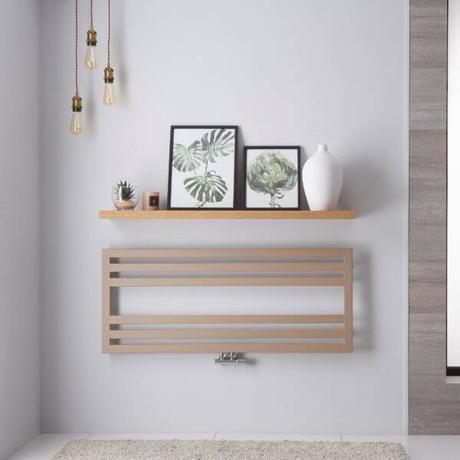
Should I get some radiator valves too?
Erm…yes, yes you should!
Your radiator valves are used to control the heat output of your radiators, so every plumbed radiator in your home will need to have a pair of valves attached to it.
You can choose from manual, thermostatic and now SMART valves too.
Which ones you go for will depend on your pipework and the look you are trying to achieve, but we have an extensive guide to making the right choice to help you get the job done.
The radiator valves you select can either make or break the overall aesthetic of your new radiator – so if you get it wrong, you’ll be kicking yourself.
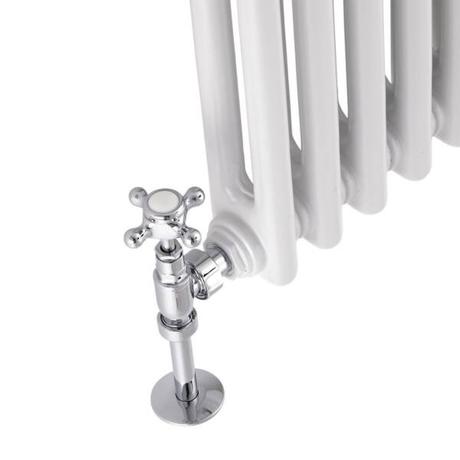
Selecting a set of valves that complements the look of the radiator will add style and value to your space and give your new radiator an even more authentic look and feel.
How do I know if a radiator needs bleeding?
This is a problem that quite a lot of people struggle with, but knowing when to spot the signs is quite simple when you know how.
A radiator may need bleeding from time to time because air has displaced the water in the system and this has led to a cold spot on the radiator, meaning it is not working to its full capacity.

Not only is this inconvenient for you, it means the radiator is not heating the room properly and you could be paying for energy that you are not even using.
You can tell if a radiator needs bleeding when the top section feels much colder than the bottom section – and we have an amazing guide on how to bleed radiators to help you.
What can I do if my radiator is leaking?
Again, as with bleeding a radiator, knowing a few simple fixes for any leaks that you may find on your radiator can also be quite handy and often save you a bit of money too.
A leaky rad problem can range from a minor inconvenience to a serious problem, depending on the amount of water you have making an exit.
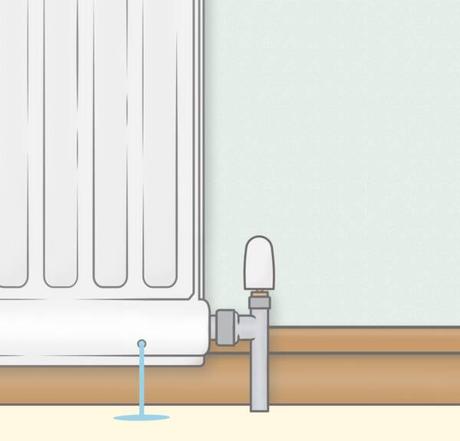
Either way – big OR small – it’s never nice having dirty radiator water making an appearance so if you have found a leak, pay a visit to our extensive guide to leaking radiators and I’m sure you’ll find the help you need to fix it up.
What next in the wonderful world of radiators?
At BestHeating.com, we pride ourselves on keeping our finger (and pretty much any other body part we can think of) on the pulse of the heating industry.
On the horizon here at BestHeating HQ we have bold colours, textured materials and radiators that feature stylish full-length mirrors that double up as a practical space-saving heating solution for the bedroom.
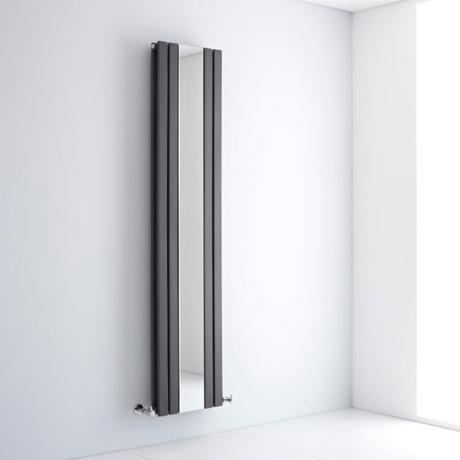
We’re also bringing in an exciting new range of electric heating and continue to work with our suppliers to ensure that our connected heating range – in the shape of advanced Bluetooth heating elements – continues to expand on and enhance your home heating experience.
There’s also a new SMART heating system in the pipeline that we are hoping to develop and start rolling out at the end of 2019, so watch this space for BestHeating’s own voice-activated heating systems.
The future of home heating is looking pretty bright, exciting and no doubt hotter than ever before, so hold on to your radiator tails people, we could be in for quite a ride.
And don’t forget, if you have any other radiator or towel rail questions, be sure to check out the BestHeating FAQ Pages to discover a wealth of heating help, advice and know how!

